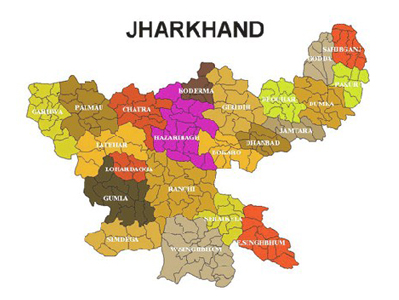About of Jharkhand

This fourteenth largest state in India in terms of population, Jharkhand was admitted as a new state of the union of India in 2000 after carved out of the southern part of Bihar.
Situated in the eastern part of India, Jharkhand shares its borders with Bihar in the north, West Bengal in the east, Uttar Pradesh and Chhattisgarh in the west and Odisha in the south. Jharkhand is home to 40 per cent of India's mineral reserves. It is not surprising, mining and mineral extraction are the key industries in the state. Mineral resources found in the state are coal. iron ore, copper ore, mica, uranium, bauxite, limestone, granite, silver, magnetite, graphite and dolomite. Jharkhand ranks first and second among the Indian states in the production of oal and iron respectively. The state’s claim to fame also lies in being the only state in India to produce uranium, coking coal and pyrite.
About 80 per cent of Jharkhand’s rural population is dependent on agriculture. Rice, the major crop of the state, is cultivated in 80 per cent of the cropped area.
Jharkhand offers enough to fill long days of travel. Most famous of the temples in the state is the Baidyanath Dham, which is home to one of the Dwadasa Jyotirlinga shrines. Parasnath is a revered place for the Jain pilgrims. It was here, more than 26 centuries ago, that twenty two out of twenty four Tirthankaras attained enlightenment. The state is also known for several waterfalls.